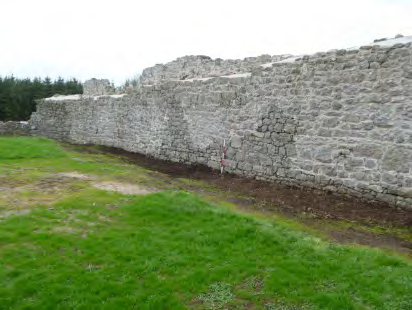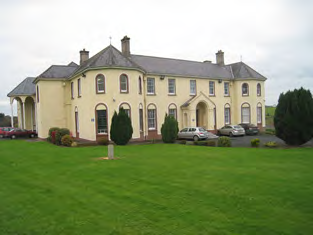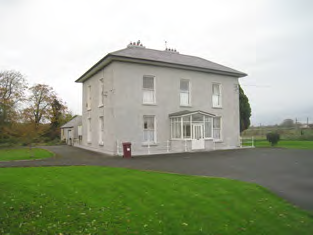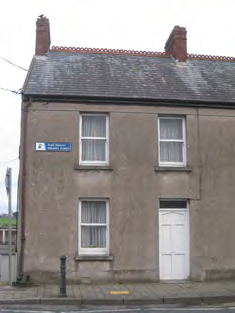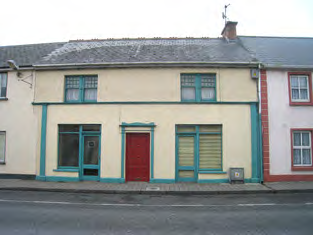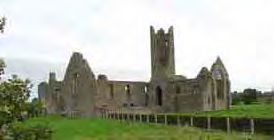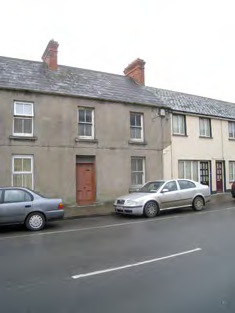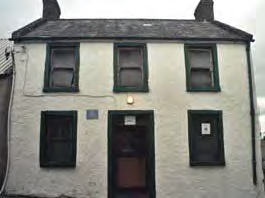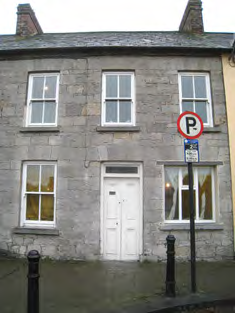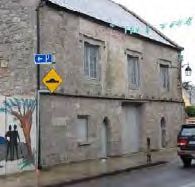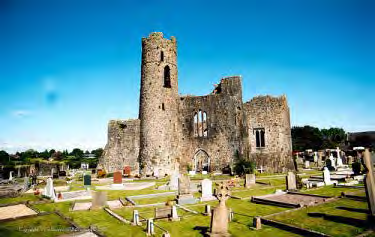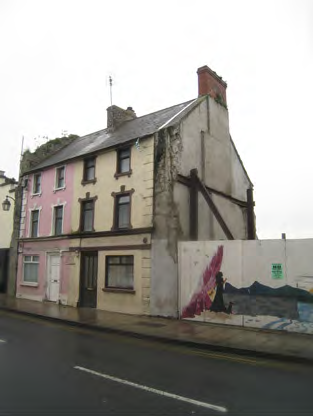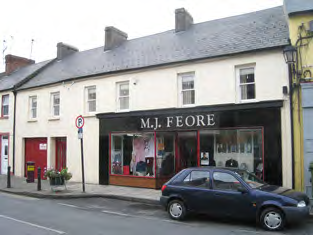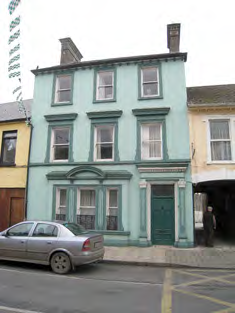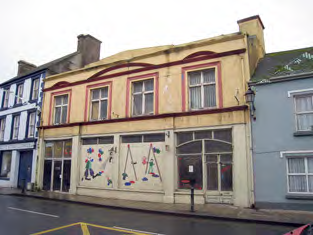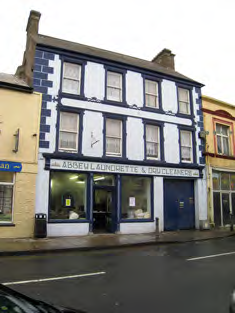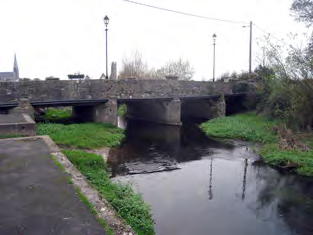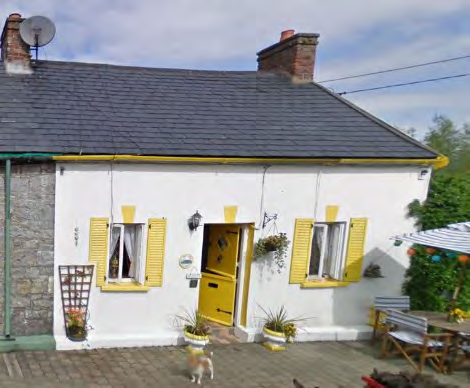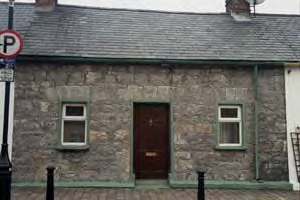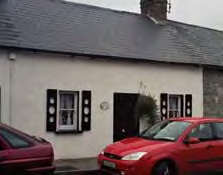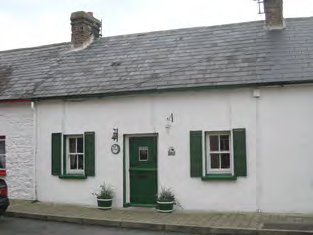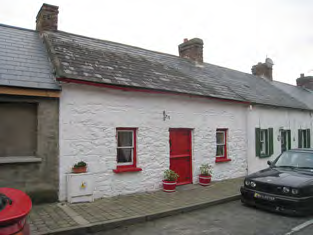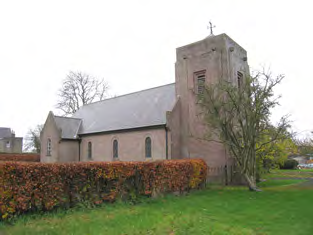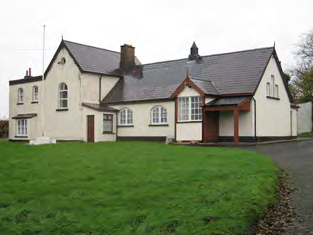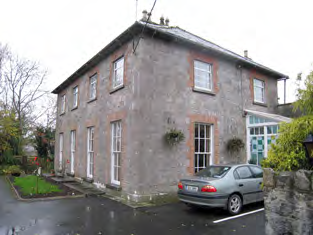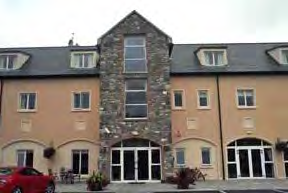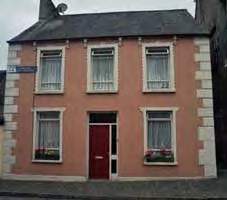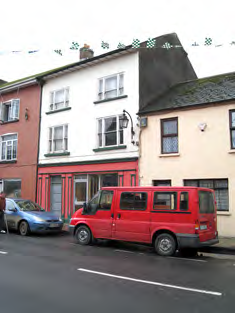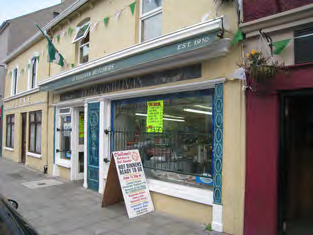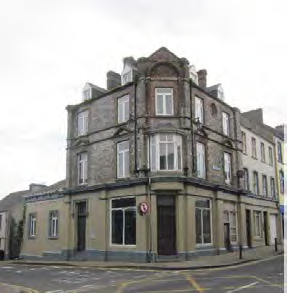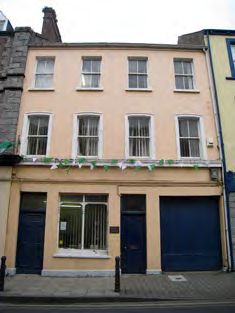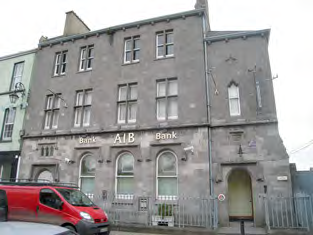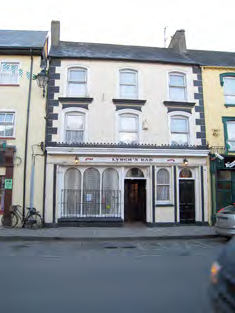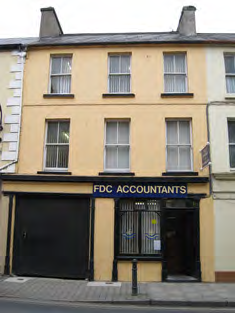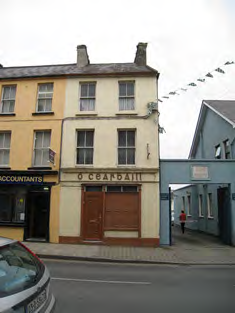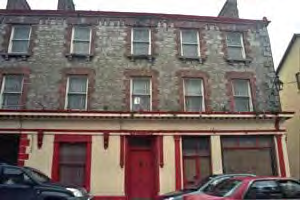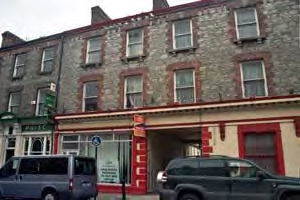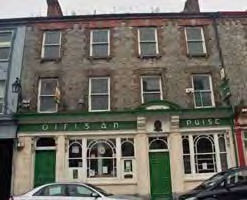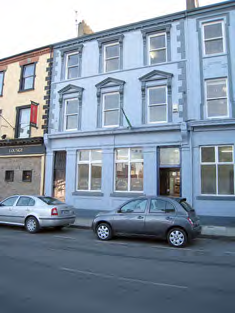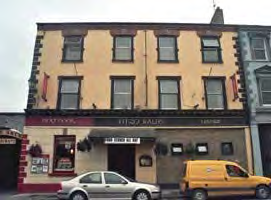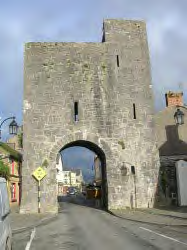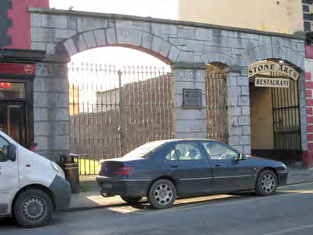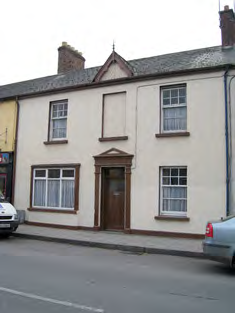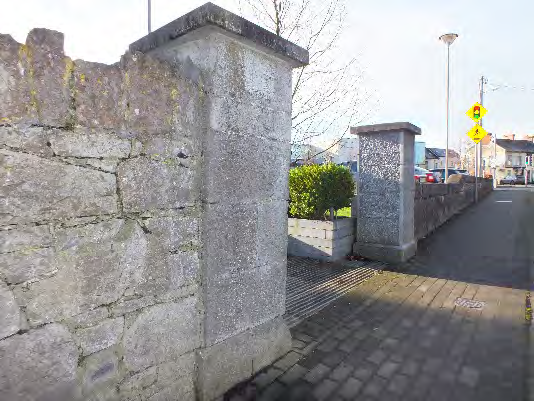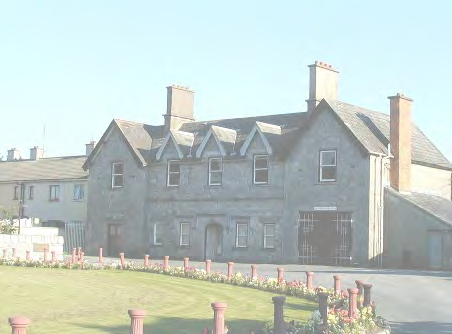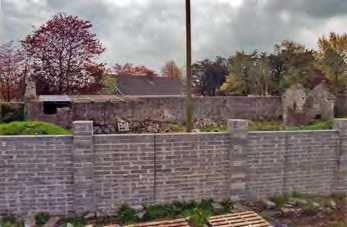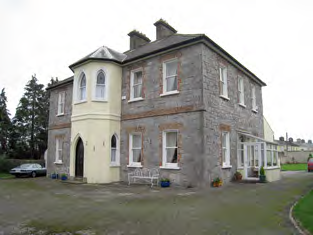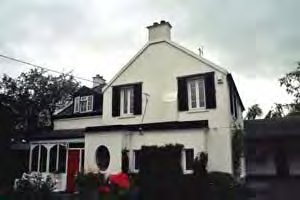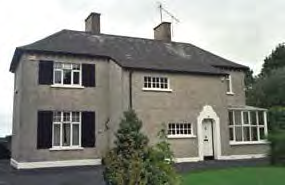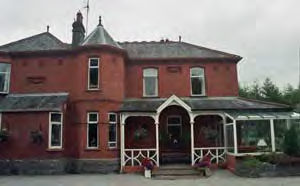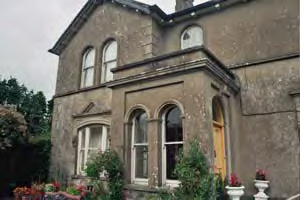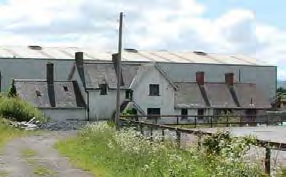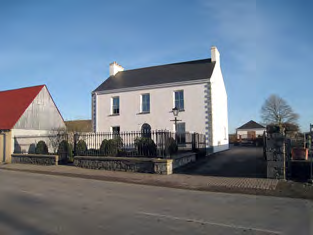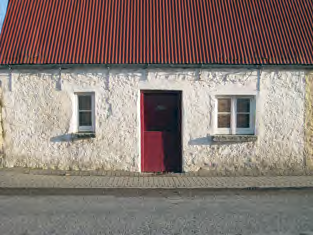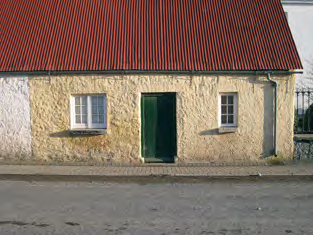Appendix 2 - Protected Structures in Kilmallock Local Area Plan, and general guidance for undertaking works on older buildings
A Protected Structure is a structure that is considered to be of special interest from an architectural, historical, archaeological, artistic, cultural, scientific, social or technical point of view.
The Record of Protected Structures (RPS) is a list of the buildings held by a Local Authority that contains buildings considered to be of special interest in its operational area.
Section 51 (of the 2000 Act) requires that the development plan shall include a Record of Protected Structures and that the Record shall include every structure that is, in the opinion of the Planning Authority, of special interest. Refer to limerick.ie and Section 6.4 of this plan.
(i) Record of Protected Structures
|
Ref: |
Building/ Structure |
Location/ Townland |
Description/ Comments and category of interest |
Picture |
|
1350 |
Town Wall |
Kilmallock |
Medieval town defences refer to Kilmallock Town Wall Conservation and Management Plan |
Courtesy of Sarah McCutcheo |
|
1351 |
Scoil Iosef – post primary school |
Abbeyfarm |
Designed by the Cork born architect, Dominic Mary O'Connor, constructed 1931 NIAH ref: 2181307
|
©copyright NIAH |
|
1352 |
Abbeyview |
Abbeyfarm |
Parochial House built 1870 NAIH 21813016
|
©copyright NIAH |
|
1353 |
St Peter & Paul’s RC Church |
Kilmallock |
Gothic Revival Roman Catholic church, built between 1878-79, designed by architect J.J. McCarthy NIAH 21813015
|
©copyright NIAH |
|
1355 |
24 Sheares Street |
Kilmallock |
End of terrace, two-bay, two storey house built c.1830
NIAH 21813018
|
©copyright NIAH |
|
1356 |
Avida Hairdressers Sheare Street |
Kilmallock |
Two storey house built c.1830, later ground floor retail use.
NIAH 21813013
|
©copyright NIAH |
|
1357 |
Dominican Abbey |
Abbeyfarm |
National Monument LI047-022018
|
Extracted from Kilmallock Town Wall Conservation and Management Plan |
|
1358 |
Sheare Street |
Kilmallock |
Terraced, two-bay, two storey house built c.1830
NIAH 21813012 Architectural value, retaining most of its original fabric
|
©copyright NIAH |
|
1359 |
Sheare Street |
Kilmallock |
Two-bay, two storey, terraced house built c.1830
|
|
|
1360 |
Kilmallock Museum |
Chapel Lane |
Detached, three-bay, two storey, house built c.1830
|
|
|
1361 |
Sheare Street |
Kilmallock |
Terraced, three-bay, two-storey house built c.1830
NIAH 21813011
|
©copyright NIAH |
|
1362 |
Kings Castle |
Sheare Street/ Sarsfield Street |
National Monument LI047-022008
|
|
|
1363 |
Merchant’s House |
Sarsfield Street |
National Monument LI047-022019
|
©copyright NIAH |
|
1364 |
Collegiate Church |
Orr Street |
National Monument LI047-022009
|
|
|
1365 |
Sarsfield Street |
Kilmallock |
Attached two-bay, two-storey house built c.1810 NIAH 21813006
|
|
|
1366 |
Sarsfield Street |
Kilmallock |
Attached two-bay, two-storey house built c.1810 NIAH 21813005
|
|
|
1367 |
M.J.Feore Sarsfield Street |
Kilmallock |
Terraced two-storey house built c.1820 - 40 NIAH 21813023
|
©copyright NIAH |
|
1368 |
Friar’s Gate Theatre Sarsfield Street |
Kilmallock |
Former cinema, art noveau style |
©copyright NIAH |
|
1369 |
Sarsfield Street |
Kilmallock |
Remains of 17th century Sarsfield House seen in the masonry walls on either sides of the cinema/theatre |
©copyright NIAH |
|
1370 |
Sarsfield Street |
Kilmallock |
Terraced three-storey, two-bay house built c.1840 NIAH 21813024
|
©copyright NIAH |
|
1371 |
Sarsfield Street |
Kilmallock |
Terraced two-storey, four-bay building built c.1830 NIAH 21813004
|
©copyright NIAH |
|
1372 |
Abbey Launderette Sarsfield Street |
Kilmallock |
Terraced three-storey, two-bay house built c.1810 NIAH 21813003
|
©copyright NIAH |
|
1373 |
Bridge Wolfe Tone Street |
Kilmallock |
Four-arch humpback road bridge over the River Loobagh with overflow arch, built c. 1800, original bridge circa.1290 NIAH 21813031
|
©copyright NIAH |
|
1374 |
Wolfe Tone Street |
Kilmallock |
|
©copyright Google Maps |
|
1375 |
Cottage |
Wolfe Tone Street |
|
|
|
1376 |
Cottage |
Wolfe Tone Street |
|
|
|
1377 |
Ivy Cottage |
Wolfe Tone Street |
Built 1709 – 1810
NIAH 21813030
|
©copyright NIAH |
|
1378 |
Cottage |
Wolfe Tone Street |
NIAH 21813029
|
©copyright NIAH |
|
1379 |
Church of Ireland |
Deebert |
Romanesque Revival style Church of Ireland church, built in 1938.
NIAH 21813059
|
©copyright NIAH |
|
1380 |
Coote Memorial Hall |
Deebert |
Built 1905
NIAH 21813058
|
©copyright NIAH |
|
1381 |
Deebert House |
Deebert |
Built c.1804
NIAH 21813060
|
©copyright NIAH |
|
1382 |
Creamery |
Deebert |
Social/historic value – part of historic mill complex |
|
|
1383 |
Wolfe Tone Street |
Kilmallock |
|
|
|
1385 |
Wolfe Tone Street |
Kilmallock |
|
|
|
1387 |
Sarsfield Street |
Kilmallock |
Built circa. 1820
NIAH 21813003
|
©copyright NIAH |
|
1388 |
Sarsfield Street |
Kilmallock |
NIAH 21813003
|
©copyright NIAH |
|
1389 |
O’Sullivan Sarsfield Street |
Kilmallock |
NIAH 21813027
|
©copyright NIAH |
|
1390 |
Baalbec House Wolfe Tone Street/ Lord Edward Street |
Kilmallock |
NIAH 21813033
|
|
|
1391 |
Lynch’s Sarsfield Street |
Kilmallock |
Built circa. 1820
NIAH 21813003
|
©copyright NIAH |
|
1392 |
Lee Solicitor Lord Edward Street |
Kilmallock |
Kilmallock |
©copyright NIAH |
|
1393 |
AIB Lord Edward Street |
Kilmallock |
NIAH 21813034
|
©copyright NIAH |
|
1394 |
FDC Lord Edward Street |
Kilmallock |
NIAH 21813037
|
©copyright NIAH |
|
1395 |
O Cearbhaill Lord Edward Street |
Kilmallock |
NIAH 21813038
|
©copyright NIAH |
|
1396 |
Cahills Lord Edward Street |
|
NIAH 21813047
|
|
|
1397 |
Cahills Lord Edward Street |
Kilmallock |
Eastern frontage of the building
|
|
|
1398 |
Former Post Office Lord Edward Street |
Kilmallock |
NIAH 21813046
|
|
|
1399 |
Power Lord Edward Street |
Kilmallock |
NIAH 21813044, and 21813045 Built 1871-73
|
©copyright NIAH |
|
1400 |
Fitzgerald’s Lounge/Bar Lord Edward Street |
Kilmallock |
Note adjacent stone arch NIAH 21813043 – architectural and artistic value circa.1871 |
©copyright NIAH |
|
1401 |
Blossom Gate Emmet Street |
Kilmallock |
Part of town defences – archaeological, technical, historical value – National Monument status on Record of National Monument and Places |
|
|
1402 |
Peoples Hall Railway Road |
Deebert |
|
|
|
1403 |
Lord Edward Street |
Kilmallock |
NIAH 21813043 –Stone arch circa.1871 |
©copyright NIAH |
|
1405 |
Lord Edward Street |
Kilmallock |
NIAH 21813043
circa.1870 |
©copyright NIAH |
|
1406 |
Millmount |
Millmount |
Gate pier associated with workhouse |
|
|
1407 |
Kilmallock District Court House – former Union Workhouse |
Millmount |
NIAH 21813040 Gothic Revival style architectural and artistic value circa.1841
Recent refurbishment |
|
|
1408 |
Remains of workhouse laundry Railway Road |
Millmount |
|
|
|
1409 |
Former convent, former Parochial House Railway Road |
Railway Road |
NIAH 21813039 circa.1870
|
©copyright NIAH |
|
1410 |
Dwelling |
Railway Road |
Late Victorian and Edwardian style house
|
|
|
1411 |
Dwelling |
Railway Road |
Art and Craft style house
|
|
|
1412 |
Dwelling |
Railway Road |
Late Victorian and Edwardian style house
NIAH 21813057 |
|
|
1413 |
Dwelling – Clonan House |
Railway Road |
Victorian style house, built circa 1870
NIAH 21813053 |
|
|
1414 |
Railway Station |
Gortboy |
NIAH 21813039–circa.1840
|
|
|
1415 |
Charleville Road Gortboy |
Gortboy |
NIAH 21813050 Built circa 1790 -1810
|
©copyright NIAH |
|
1416 |
Charleville Road Gortboy |
Charleville Road Gortboy |
NIAH 21813048 Built circa 1790 -1810
|
©copyright NIAH |
|
1417 |
Charleville Road Gortboy |
Charleville Road Gortboy |
NIAH 21813049 Built circa 1790 -1810
|
©copyright NIAH |
General guidance for undertaking works on older buildings
To ensure that works undertaken on older traditional buildings, it is important that these works do not damage the special qualities of the building itself or the traditional streetscape. Many of these buildings have been in existence for generations and the owners have a responsibility to pass on these buildings as part of Kilmallocks history and heritage. When carrying out maintenance or repair works consider the following:
- Avoid renovation works that compromises the visual appeal of the original façade and the ACA. Do as little work to the building as is possible to maintain the historical integrity of the building
- Use experts in the area of conservation and engage the services of accredited professionals such as the conservation architects accredited by the Royal Institute of Architects of Ireland. Similarly, the Society of Chartered Surveyors has a register of conservation surveyors.
- Do your research, establish and understand reasons for the building or the feature of the building not being fit-for-purpose before undertaking the works.
- Ensure that the appropriate materials and methods are used during the works and pay attention to detail.
- Record all repairs works for the benefit of future owners.
- Avoid looking at problems in isolation, no matter how minor they seem. Consider problems in the context of the building as whole and adjoining buildings on the streetscape.
- Be careful when sourcing materials through architectural salvage. Be sure that your materials are from reliable sources and have not been taken at the expense of other buildings through theft.
In undertaking repairs or maintenance works to buildings in the Kilmallock ACA, property owners and their contractors should be aware of the materials traditionally used in the county, and more specifically, in the town itself and its immediate surrounds.
Works in Conservation Areas must retain existing surviving elements, aim to re-instate lost elements or character, with new build complementing the original streetscapes, building lines and open areas. Where original or early surviving elements, such as windows and doors, rainwater goods of rolled mild steel or cast iron (or a combination of both), natural slate roofing and lime renders, and so forth, then these should be repaired sensitively. The guidance here is to “do as much as necessary, as little as possible”. If replacement proves necessary, then they must be replaced on a “like-for-like” basis.
In replacing elements that were installed as replacements in recent decades, such as aluminium windows or smooth finish artificial slate, there are good reasons, apart from those put forward on the basis of architectural heritage, to return to the original materials, such as timber windows and natural slate. These reasons include the compatibility of traditional materials with one another and the fact that the historic material allows the building to breathe, thereby providing a healthier internal atmosphere for those using the buildings.
It is critical that interventions made retain original or early surviving material and fabric. These are limited resources that are virtually impossible to replace. Quite often, new material (though acceptable) is of a distinctively different character and if it proves necessary to take this route, then it should be positioned in as discrete a location as possible, with the original material placed in the most visible spots.
Historic building materials, and the techniques used to assemble them, meant that the structures erected are porous. They have an ability to breathe, shedding accumulated moisture from within the building and from its fabric. Any proposals to replace the renders should recognize this and ensure that new plasters, whether internal or external, are mixed used the correct proportions of sharp sands, aggregates and building lime. Similar measures should be adopted when replacing failing pointing.
The use of paints or other materials of modern composition, which seal the surfaces to which they are applied, should be avoided as they have a deleterious impact on lime based materials, whether used in renders or other finishes. The use of garish colours on walls or details of structures (such as quoins), which clash with the traditional range of pigments must be avoided as they impact negatively on the cohesiveness of the streetscape. If individuality is sought, it can be imparted to a building through highlighting the timberwork of doors and their frames, windows and gates - features which are recessed slightly and out of direct view of those looking along the length of the conservation area. Joinery and ironmongery should also be painted with breathable finishes. Micro-porous paints do not dry to a high-gloss but have a skin which allows any moisture that may penetrate through to the material below to evaporate, thereby preventing it from causing serious damage through decay or rusting.
Internal works, such as insulation, should ensure that the materials selected are compatible with the historic materials from which the building is constructed. Double-glazing as replacement for original windows is generally not acceptable. However, other interventions, such as the reinstatement of roller blinds and the installation of secondary glazing with polycarbonate panels held in place with magnetic mounts, can achieve significant improvements at a significantly lower cost than the wholesale replacement of historic windows.
Other works, such as the improvements/replacement of electrical supply and distribution systems, mechanical services, heating systems, equipment such as air conditioning units, may have implications for the external appearance of buildings within the ACAs, and the plots on which they stand. Compliance with other regulatory bodies, such as the Fire Department, may also raise issues. Consequently, interventions which may impact existing fabric, places and spaces should be carefully planned. Consultations should be undertaken at the earliest opportunity with the planning authority to ensure that the character and ambience of the ACA is not harmed.
For general advice on planning issues relating to architectural heritage refer to Architectural Heritage Protection Guidelines for Planning Authorities (2011) is available to download from the website of the Department of Culture, Heritage & the Gaeltacht. These statutory guidelines set out the mechanisms for protecting architectural heritage, and the principles of conservation that should apply to any proposed alterations to the building. Appendix B (Architectural Heritage Impact Assessments) of that document sets out the type of information that the owner should prepare when lodging a planning application. By preparing such an assessment before finalising the plans, the owner and their professional advisors are in a better position to mitigate any negative effects and generally to consider how the development can best maintain and enhance the character of the structure.
The Department of Culture, Heritage and the Gaeltacht also publishes a series of booklets, the Advice Series, for owners and custodians of historic buildings. The booklets offer detailed guidance on how best to repair, maintain and adapt such properties. Further information on an individual building may be available on the website of the National Inventory of Architectural Heritage: www.buildingsofireland.ie.
